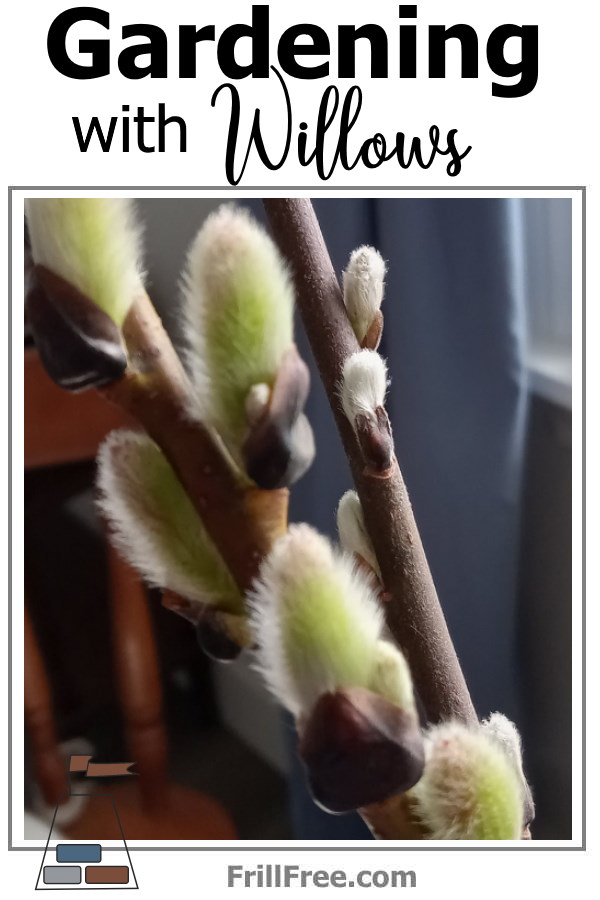- Homesteading
- Growing Ornamental Plants
- Gardening With Willows
Gardening With Willows
The Preparation, The Planting, then we wait...
Willows have been a long time favorite in my garden. If they are native species, or named cultivars, it makes no difference to me. Gardening with willows takes many forms, mine is simple enjoyment.
You might plant willows in a 'fedge' or living hedge, where you lean them over to regrow over time filling itself in to be impenetrable. You weave them together after partially cutting through the stem at the base. Eventually they graft themselves together, and could be strong enough to contain a good sized animal.
A wildlife hedge is beautiful with many different kinds of plants, including willows, in a tapestry of color and form.
Or, you might just like the act of coppicing willows to make lovely long whippy growth that waves in the wind. A line of basket making varieties would be lovely in the spring and summer.
In the spring, the male flowers, or pussies, show up in ditches and hedgerows.
Male plants are preferred in gardens because they don't produce all the fine seeds that float on fluff and get deposited everywhere. They grow in any damp spot, so get male plants if possible. If you buy cuttings, this is generally what is available. Cutting them from the nearby ditches, you have no guarantees.
This problem is easy to handle; just cut the willows early in the spring every year, eliminating their seed production.
Cutting willows to propagate is easy. Just look for a willow that has good color to it, and if it's got the pussies on, all the better. You can use pieces about a foot (30cm) long and just push it into any boggy spot or where it will get watered, and it will grow. I get normally about 100% rooting using this method.
For ornamental plantings, you can dig out grass in a patch or a line, then stick the cuttings, and mulch it to prevent the grass from growing up around the cuttings.
Don't use a string trimmer near your newly rooted cuttings, it will take the bark off them. Line the planting with brick, so you can trim near them without 'barking' them.
If you think you'll have problems with rodents, use a piece of hose or drain pipe, cut down one side so it can be removed as the plant grows. Usually, rodents won't bother older plants, just those with lush new growth.
Coppicing can be done after the willow cutting is well established. You cut it off close to the base, and it will send up many new shoots.
Each year, you cut these off and it creates a 'stool'. The best time to cut is in the early spring, before the leaves emerge. The bark is less likely to be marked or torn at that time.
And what to do with your willows now? They are multi-faceted garden plants. You can just enjoy them as a privacy screen or to attract birds to your garden, as a freely growing shrub.
Or, coppiced every year they can provide basket making supplies, or other craft materials.
They can be grown as bio fuel, and cut to heat water or in a boiler system. Or, you can cut them into small pieces and burn them for charcoal or biochar.
Whatever you use them for, all they need is sunshine and water to be a success in any garden.















